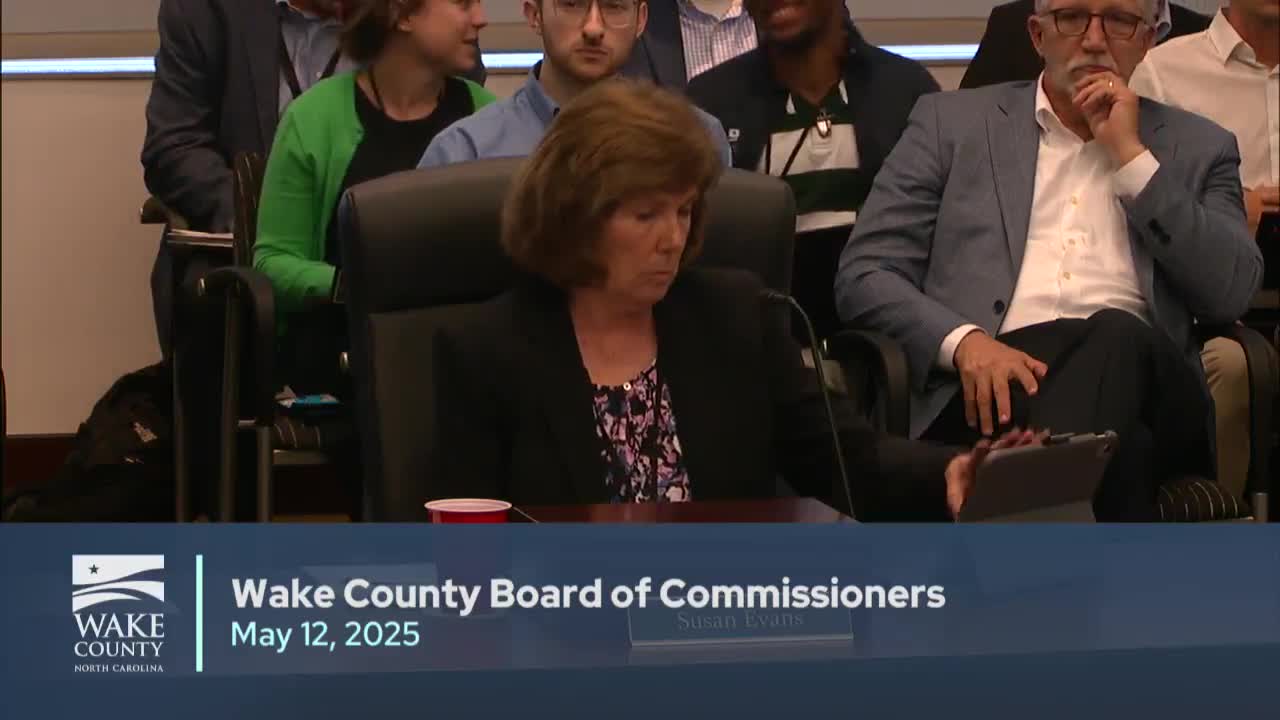Wake County Introduces $4.8 Billion Capital Improvement Program for FY 2026 to 2032
May 12, 2025 | Wake County, North Carolina
This article was created by AI summarizing key points discussed. AI makes mistakes, so for full details and context, please refer to the video of the full meeting. Please report any errors so we can fix them. Report an error »

The Wake County government meeting on May 12, 2025, focused on the introduction of the Fiscal Year 2026 through 2032 capital program, which totals over $4.8 billion. The meeting began with a presentation from the county manager, outlining the capital plan included in the recommended budget released on May 5.
The capital program allocates significant funding to various sectors, with Wake County Public Schools receiving the largest share at approximately $3 billion, accounting for 62% of the total plan. Wake Tech Community College is set to receive about $425 million, or 9% of the program, while county departments and court responsibilities will receive around $1.2 billion, making up 24% of the budget. Additionally, affordable housing initiatives are allocated just over $190 million, representing 2% of the total.
The funding sources for the capital program are primarily derived from debt, which constitutes 70% of the overall budget. Other funding comes from cash sources, known as PAYGO, and some municipal reimbursements. The plan is structured to ensure fiscal responsibility, with identified funding for each project.
During the meeting, Commissioner Adamson raised a question regarding the solid waste capital allocation, specifically whether it includes plans for a new facility once the current landfill reaches capacity. This inquiry highlights ongoing concerns about waste management as the county prepares for future needs.
The meeting concluded with a commitment to regularly review and refine the projects outlined in the capital program, ensuring that the plan remains balanced and within the county's financial means.
The capital program allocates significant funding to various sectors, with Wake County Public Schools receiving the largest share at approximately $3 billion, accounting for 62% of the total plan. Wake Tech Community College is set to receive about $425 million, or 9% of the program, while county departments and court responsibilities will receive around $1.2 billion, making up 24% of the budget. Additionally, affordable housing initiatives are allocated just over $190 million, representing 2% of the total.
The funding sources for the capital program are primarily derived from debt, which constitutes 70% of the overall budget. Other funding comes from cash sources, known as PAYGO, and some municipal reimbursements. The plan is structured to ensure fiscal responsibility, with identified funding for each project.
During the meeting, Commissioner Adamson raised a question regarding the solid waste capital allocation, specifically whether it includes plans for a new facility once the current landfill reaches capacity. This inquiry highlights ongoing concerns about waste management as the county prepares for future needs.
The meeting concluded with a commitment to regularly review and refine the projects outlined in the capital program, ensuring that the plan remains balanced and within the county's financial means.
View full meeting
This article is based on a recent meeting—watch the full video and explore the complete transcript for deeper insights into the discussion.
View full meeting
